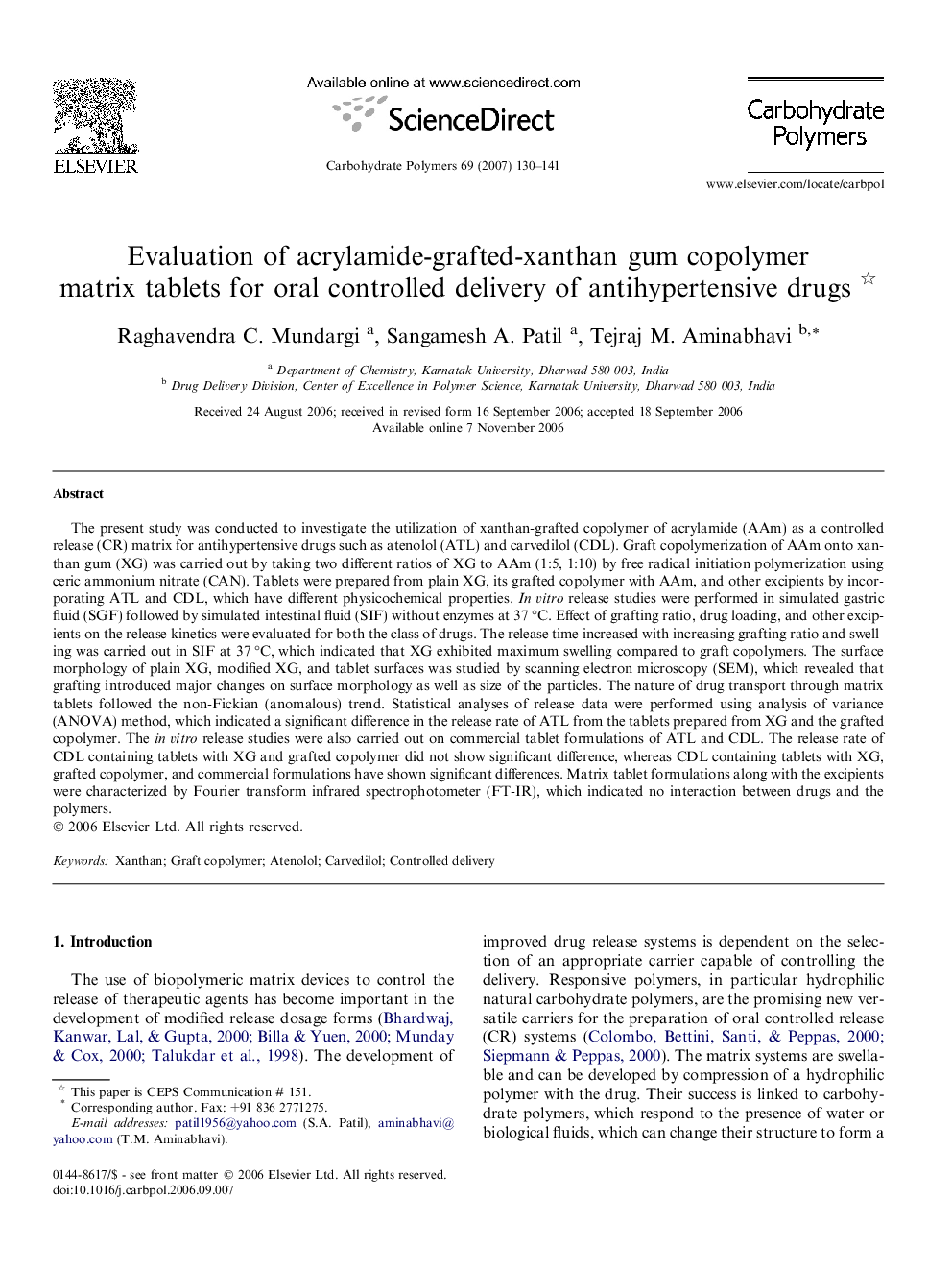| Article ID | Journal | Published Year | Pages | File Type |
|---|---|---|---|---|
| 1384999 | Carbohydrate Polymers | 2007 | 12 Pages |
The present study was conducted to investigate the utilization of xanthan-grafted copolymer of acrylamide (AAm) as a controlled release (CR) matrix for antihypertensive drugs such as atenolol (ATL) and carvedilol (CDL). Graft copolymerization of AAm onto xanthan gum (XG) was carried out by taking two different ratios of XG to AAm (1:5, 1:10) by free radical initiation polymerization using ceric ammonium nitrate (CAN). Tablets were prepared from plain XG, its grafted copolymer with AAm, and other excipients by incorporating ATL and CDL, which have different physicochemical properties. In vitro release studies were performed in simulated gastric fluid (SGF) followed by simulated intestinal fluid (SIF) without enzymes at 37 °C. Effect of grafting ratio, drug loading, and other excipients on the release kinetics were evaluated for both the class of drugs. The release time increased with increasing grafting ratio and swelling was carried out in SIF at 37 °C, which indicated that XG exhibited maximum swelling compared to graft copolymers. The surface morphology of plain XG, modified XG, and tablet surfaces was studied by scanning electron microscopy (SEM), which revealed that grafting introduced major changes on surface morphology as well as size of the particles. The nature of drug transport through matrix tablets followed the non-Fickian (anomalous) trend. Statistical analyses of release data were performed using analysis of variance (ANOVA) method, which indicated a significant difference in the release rate of ATL from the tablets prepared from XG and the grafted copolymer. The in vitro release studies were also carried out on commercial tablet formulations of ATL and CDL. The release rate of CDL containing tablets with XG and grafted copolymer did not show significant difference, whereas CDL containing tablets with XG, grafted copolymer, and commercial formulations have shown significant differences. Matrix tablet formulations along with the excipients were characterized by Fourier transform infrared spectrophotometer (FT-IR), which indicated no interaction between drugs and the polymers.
